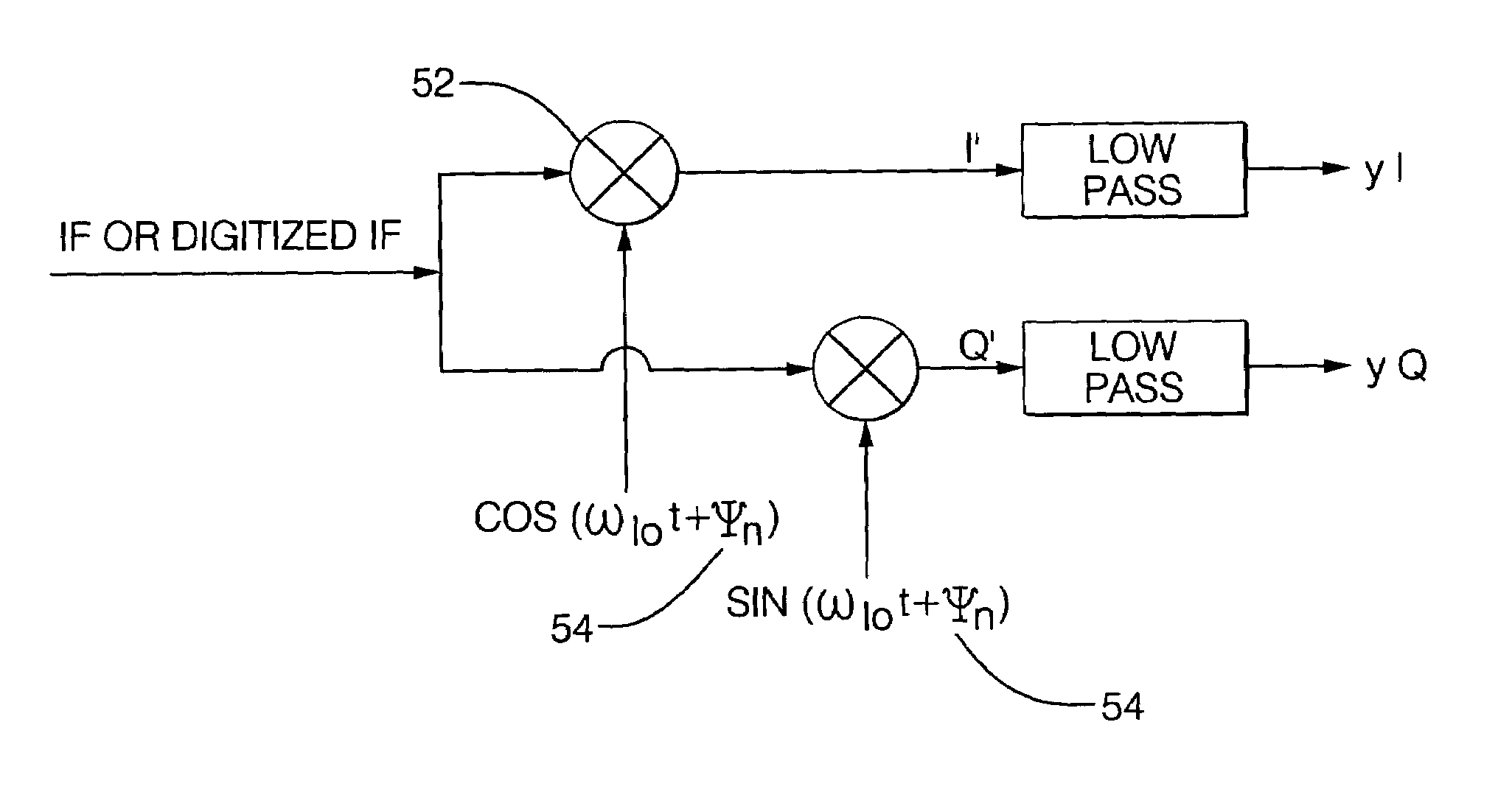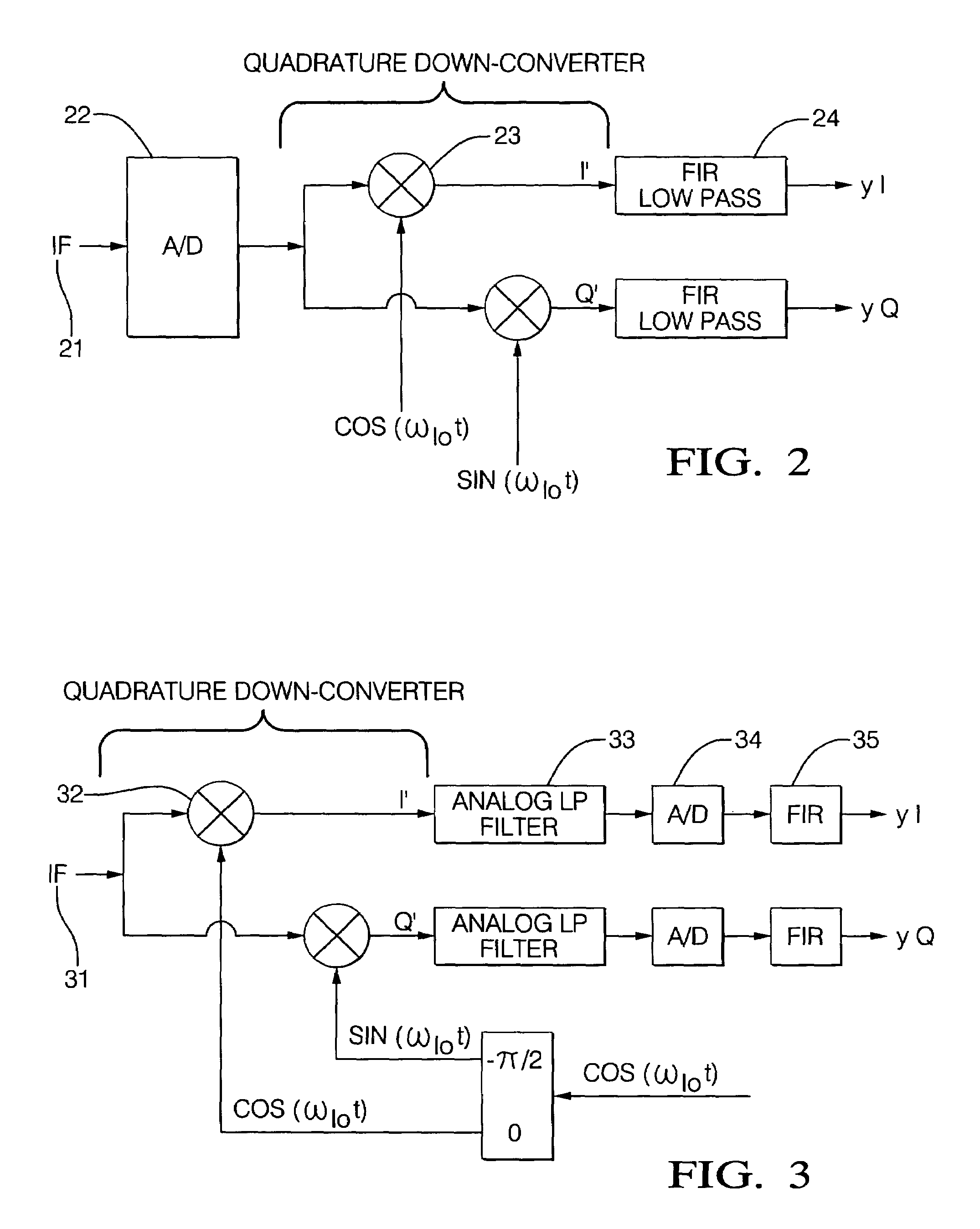Digital beam forming for communications systems
a technology of mobile communications and digital beams, applied in the field of communication antennas and receivers, can solve the problems of system cost, increased signal processing load, and high cost of adaptive array systems, and achieve the effects of low cost, high data rate, and high directivity
- Summary
- Abstract
- Description
- Claims
- Application Information
AI Technical Summary
Benefits of technology
Problems solved by technology
Method used
Image
Examples
Embodiment Construction
[0030]Exemplary embodiments are described with reference to specific configurations. Those of ordinary skill in the art will appreciate that various changes and modifications can be made while remaining within the scope of the appended claims. Additionally, well-known elements, devices, components, methods, process steps and the like may not be set forth in detail in order to avoid obscuring the invention. Further, unless indicated to the contrary, the numerical values set forth in the following specification and claims are approximations that can vary depending upon the desired characteristics sought to be obtained by the present invention.
[0031]Communications systems having digital signal processing operations currently utilize an adaptive phased array antenna that acquire and track the locations of a multiplicity of broadcast stations from a mobile platform using a Digital Beam Forming (DBF) phased array antenna technique. In addition to determining the angle of arrival of a sign...
PUM
 Login to View More
Login to View More Abstract
Description
Claims
Application Information
 Login to View More
Login to View More - R&D
- Intellectual Property
- Life Sciences
- Materials
- Tech Scout
- Unparalleled Data Quality
- Higher Quality Content
- 60% Fewer Hallucinations
Browse by: Latest US Patents, China's latest patents, Technical Efficacy Thesaurus, Application Domain, Technology Topic, Popular Technical Reports.
© 2025 PatSnap. All rights reserved.Legal|Privacy policy|Modern Slavery Act Transparency Statement|Sitemap|About US| Contact US: help@patsnap.com



